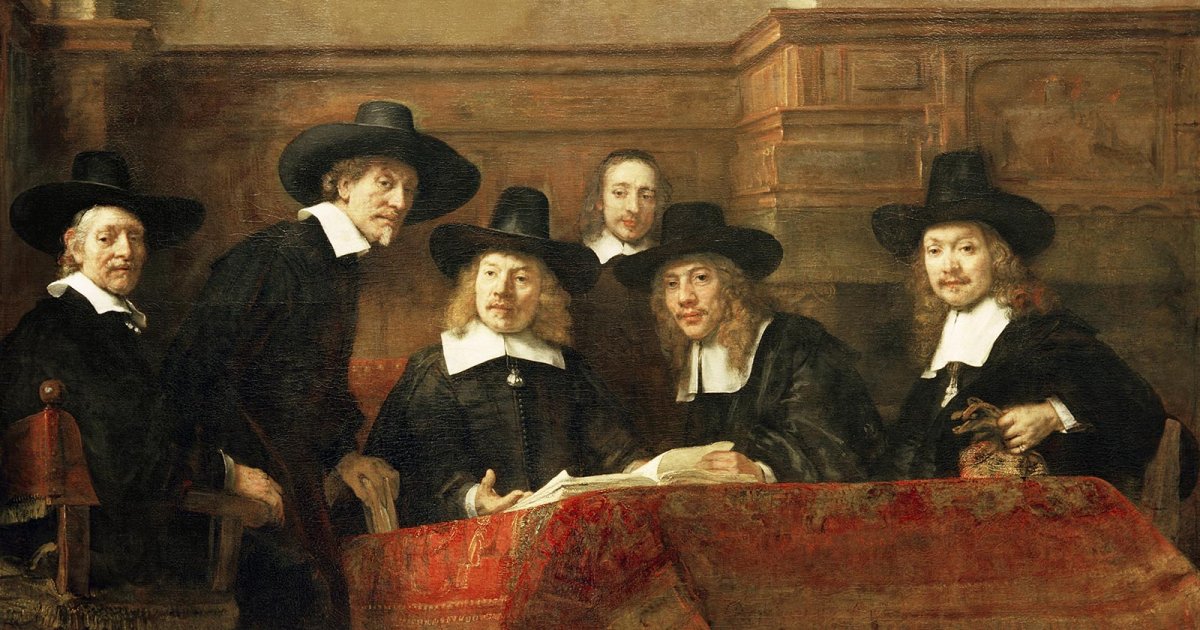RIJKSMUSEUM , Rembrandt's Later Works
 Language: English / USA
Language: English / USA
Rembrandt’s last paintings are displayed in one of the rooms of the central gallery, just before The Night Watch.
The great painter continued to receive important assignments during the last years of his life, such as the group portrait from 1662 entitled The Sampling Officials, depicting the five representatives of the drapers’ guild, accompanied by their attendant.
The main feature of the scene are the samples of fabrics that the conversation is focused on. The sequence of seated characters is interrupted by the second figure from the left, whose gesture of rising from his seat breaks up the immobile pattern of the meeting.
The painter’s decision to have the guildsmen’s attention facing the observer is a stroke of genius. It’s as if we’ve taken a step too close, making the floorboards creak: the busy gentlemen raise their eyes from the ledger, leaving their conversation and their movements suspended in mid-air, turning as one to look in our direction.
Now press pause and turn your attention to another of Rembrandt’s masterpieces, The Jewish Bride.
This work was painted just a couple of years before the artist’s death. The title is not original, and may indeed be misleading, for there is nothing to confirm that this is a Jewish wedding.
In this painting, Rembrandt does not clearly define a subject, but rather seeks to represent the universal meaning of love between two people. The clothing and the jewelry of the bride and groom are so magnificently depicted in gold and red that they more closely resemble the work of a goldsmith than that of a painter.
Notice how the man is embracing the woman, with his left arm around her shoulders and the right arm stretched over her bosom. Gently, yet with determination, the bride’s hand meets the hand of her husband on her breast, with this dual contact accentuating the pressure and highlighting the sense of complicity, understanding and desire. With an enveloping gesture, the man pulls his bride ever closer to him: the narrow space that remains between them will soon be filled, and they will be locked in a tight embrace.
An interesting fact: over three hundred paintings and almost two thousand drawings have been attributed to Rembrandt. If you want to know what the great painter looked like, here in the museum you can see him in some of his self-portraits, which number almost a hundred.



